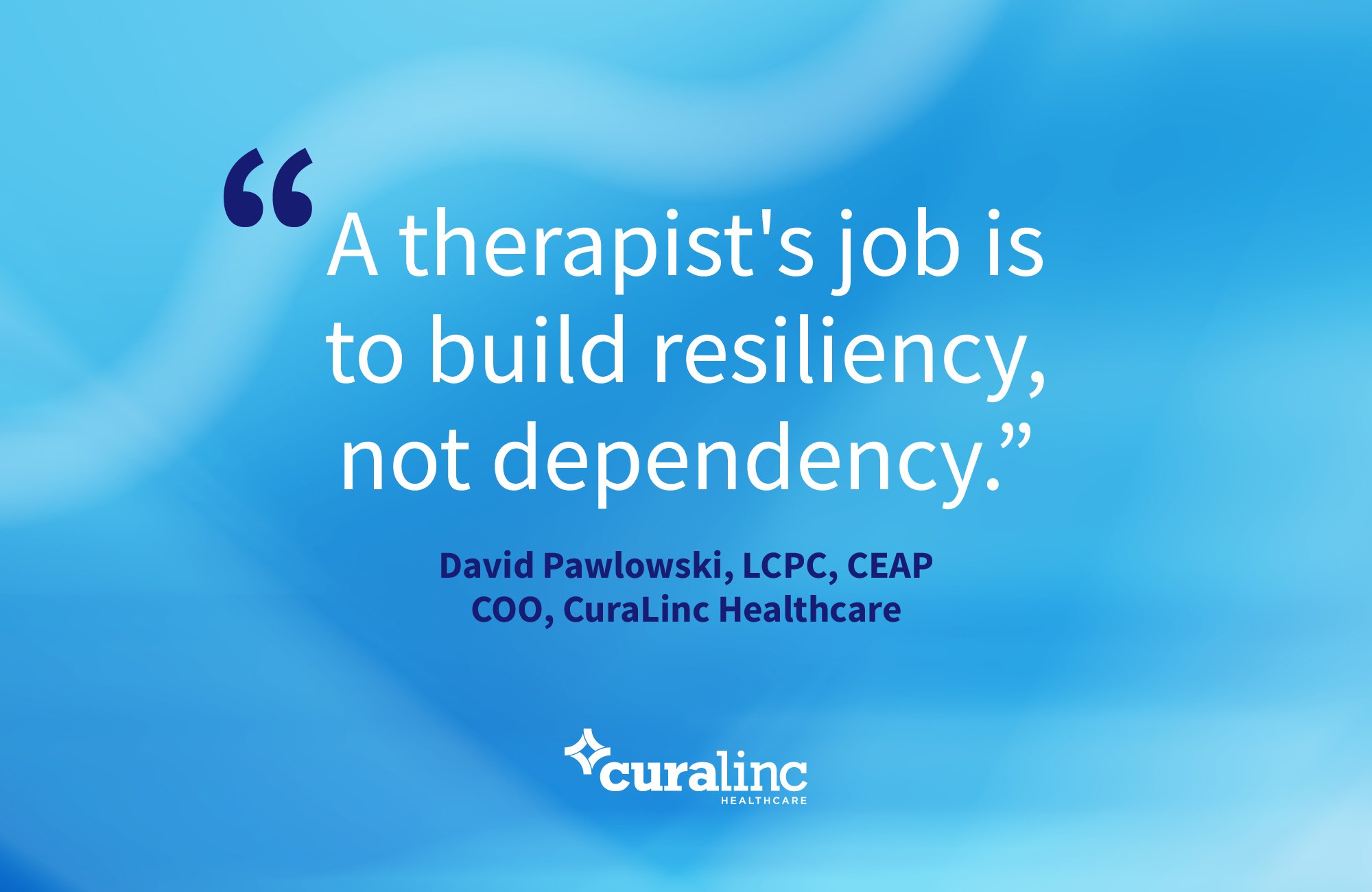There are an estimated 70 million health workers around the world today. They have committed their lives to caring for others, but the mental and emotional demands of their work have intensified over the last several years. Even before the pandemic, burnout, compassion fatigue, and mental health struggles were becoming increasingly common. Today, those issues are front and center—and costly.
That’s why investing in a mental health program that can meet the unique and evolving needs of healthcare employees isn’t just the right thing to do—it’s a strategic investment for your organization, your people, and your patients.
This post examines what the data actually says about mental health ROI in healthcare, how CuraLinc’s evidence-based approach stacks up, and how decision-makers can identify the programs that make a meaningful impact.
The cost of inaction
The financial impact of untreated or unsupported mental health issues among healthcare employees is significant.
Turnover is expensive
According to a recent report from Oracle, turnover rates for segments of the healthcare industry ranged from 19.5% at hospitals to 65% for at-home care providers to 94% at nursing homes. Turnover is costly in any industry, but the impact of staffing shortages and high turnover in healthcare is far-reaching. When burnout leads to resignations, it adds pressure across the board, leaving shifts understaffed, teams exhausted, and patient care compromised.
Productivity suffers
When healthcare employees are experiencing mental health challenges and continue coming to work without addressing them, they are at risk of presenteeism. Although they are present physically, they may have more trouble concentrating or working at their normal pace, and they may be more likely to make mistakes. Others may miss a significant amount of work. Increased absenteeism can also lead to staffing shortages that impact team morale and patient safety, much like turnover. Each year, depression and anxiety lead to the loss of 12 billion workdays around the world, resulting in more than $1 trillion in productivity losses.
Patient outcomes are at risk
Research has consistently shown that burnout and emotional exhaustion among clinicians are linked to increased medical errors, lower patient satisfaction, and higher rates of adverse outcomes. In fact, a 2025 meta-analysis found a moderate positive correlation between healthcare worker burnout and negative patient outcomes, particularly in areas like emotional exhaustion and depersonalization.
Not all programs deliver the same ROI
Not all mental health programs drive the same level of return on investment. While you often hear about engagement statistics or the number of people who downloaded an app, those numbers don’t tell you whether people actually got better. Was their problem solved? Did they get connected to support that was able to meet their unique needs? How did they feel after? How was their workplace performance impacted? Vanity metrics don’t move the needle when it comes to mental health.
What sets high-ROI programs apart?
Real-time access to care
Mental health challenges don’t operate on a regular work schedule. For healthcare workers especially, stress and emotional strain can surface during off-hours, overnight shifts, or in the middle of a crisis. That’s why real-time access to care—whether through live phone support or chat—is a critical component of any effective mental health program.
Sometimes, a single-session intervention can de-escalate distress, help someone feel more grounded, or prevent a more serious episode from occurring. Other times, it’s the first crucial step in connecting someone to long-term care. Without timely access to care in the format someone prefers, even the best clinical network falls short. Real-time support empowers employees to access live support when they need it most, not just during business hours.
High-touch navigation
At CuraLinc, every member is guided by a dedicated Care Advocate who tailors their path, screens for social determinants of health (SDOH), and matches them to the right provider.
When it comes to mental health, getting help is rarely as simple as clicking a link. Employees may be unsure of what support they need. It could be counseling, coaching, or something else entirely. Others may feel anxious, embarrassed, or afraid to take the first step. That’s why high-touch navigation makes all the difference.
Personalized navigation means employees are guided to the right resource based on their needs, preferences, and comfort level. This kind of hands-on guidance reduces drop-off, ensures follow-through, and dramatically increases the likelihood of successful outcomes.
Inclusive, credentialed provider networks
Access to care means more than just availability. It means relevance, trust, and cultural connection. For a mental health program to work, all employees need to feel safe and understood by the person on the other end of the conversation. That’s why diverse, credentialed provider networks matter.
When clinicians reflect a range of cultural backgrounds, identities, and lived experiences—and are clinically trained to deliver inclusive care—employees are more likely to engage, stay in treatment, and benefit from it. It also ensures support is appropriate and nuanced, especially in sensitive situations involving trauma, identity, or discrimination.
As you evaluate mental health vendors, it’s worth asking:
· Do their networks reflect our workforce?
· Can they provide care in the languages our employees speak?
· Are they clinically vetted, not just credentialed on paper?
How to maximize mental health ROI in your organization
Achieving the best ROI starts with strategy. That means moving beyond check-the-box solutions and building a mental health approach that’s proactive, connected, and data-informed.
1. Choose a clinically validated platform
Work with a mental health partner that goes beyond engagement metrics and demonstrates real impact using standardized tools like the PHQ-9 (for depression) and GAD-7 (for anxiety). These tools allow you to measure symptom improvement and treatment effectiveness across time.
Why it matters:
Clinical measures provide evidence of whether care is truly helping employees get better.
Symptom tracking informs continuous improvement so you can identify gaps and areas that need enhancement.
In sensitive and demanding environments like healthcare, where emotional wellbeing directly impacts patient experience and team resilience, clear visibility into emotional wellbeing is essential for reducing burnout and preserving care quality.
Tip: Ask vendors not just if they use these tools, but how they use the data to adjust care pathways or demonstrate ROI.
2. Prioritize personalized navigation and whole-person support
Employees don’t always need more programs—they need a trusted guide who understands the benefits they have access to and can get them to the right place. When someone reaches out for mental health support, it's often during a moment of stress or vulnerability. If they’re left to stare at a list of options, they may disengage before they ever receive care.
How navigation drives ROI:
Personalized navigation ensures employees are matched with the right support the first time—whether that’s an EAP counselor, a medical provider, or another benefit already available to them
CuraLinc’s approach begins by connecting employees with a licensed clinician who takes time to understand their unique needs and preferences—while also reviewing their available benefits—to ensure they’re matched with the right resources from the start
This reduces frustration, shortens time to care, and helps employees take advantage of the full range of tools your organization is already investing in
Action steps:
Partner with a mental health provider that offers personalized navigation and benefits integration
Highlight to employees that your EAP can act as a central point of contact when they’re experiencing mental health challenges, but that it can also connect them with providers, community resources, and other services to help alleviate stress
Make sure your mental health partner offers access to live, in-the-moment support so no one feels hesitant, confused, or alone in a time of need
3. Build a culture that reduces stigma and encourages use
Even the best EAP won’t generate ROI if employees don’t feel safe or supported in using it. Company culture is key.
Ways to make mental health part of your culture:
Encourage senior leaders and managers to talk openly about mental wellbeing
Provide mental health training for managers and employees to build a culture of empathy, reduce stigma, and equip teams to recognize when someone may need support
Highlight confidentiality and success stories to normalize EAP use and reduce fear of judgment
Bottom line: A strong culture reduces stigma, increases utilization, and improves outcomes, amplifying the clinical and business returns of your investment.
Make mental health your advantage
Mental health support is no longer a “nice-to-have”—it’s a strategic business investment. In healthcare, where lives depend on a resilient, engaged staff, the value of emotional wellbeing translates directly into organizational performance and a better patient experience.
If you’re measuring ROI from mental health programs, don’t just settle for engagement rates. Look for evidence-based, data-backed outcomes. And make sure your mental health partner is committed to delivering meaningful change.
What ROI looks like in the real world
How much impact can a truly effective mental health program make? One leading health system with 18,000 employees partnered with CuraLinc and saw a $10.30 return for every $1 spent.
Download the full case study to see how personalized, human-centered mental health care translates into measurable business value.




